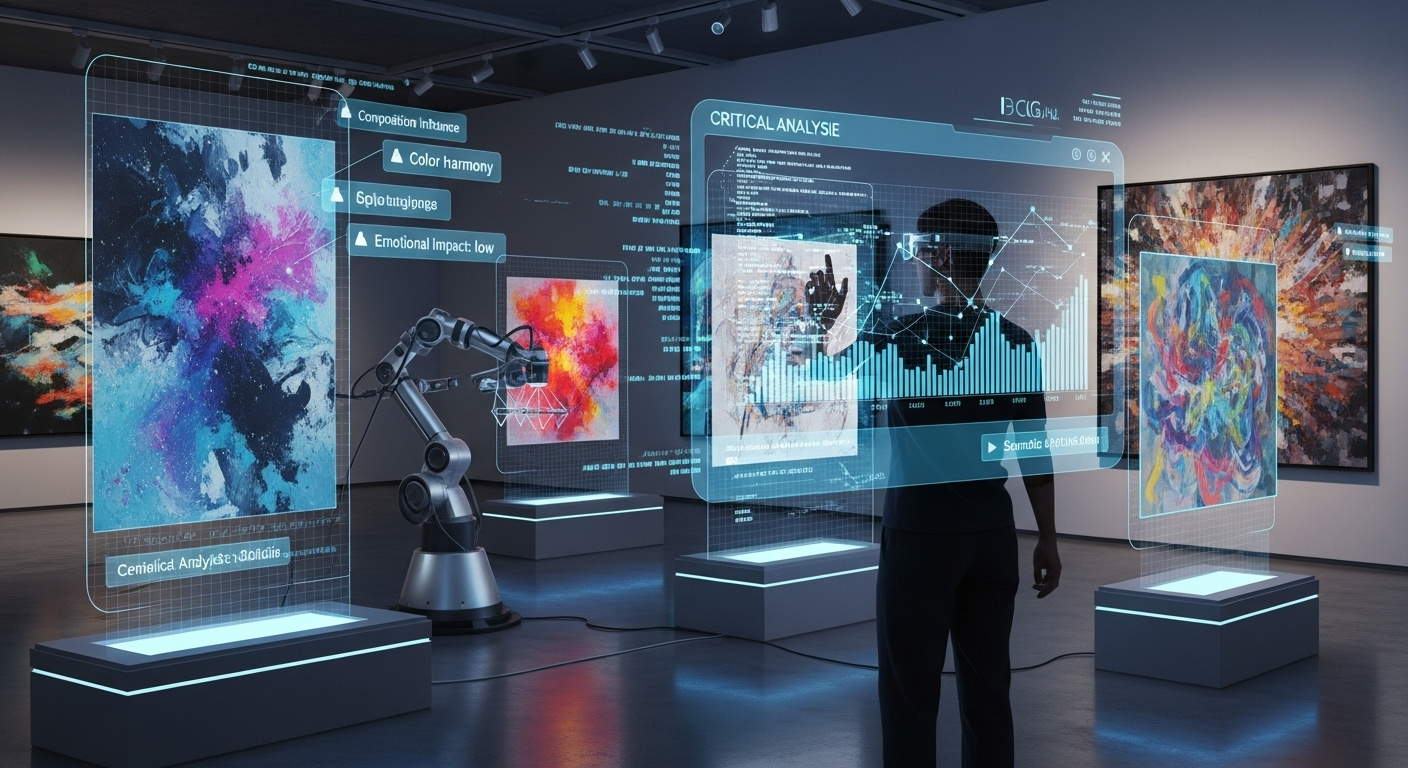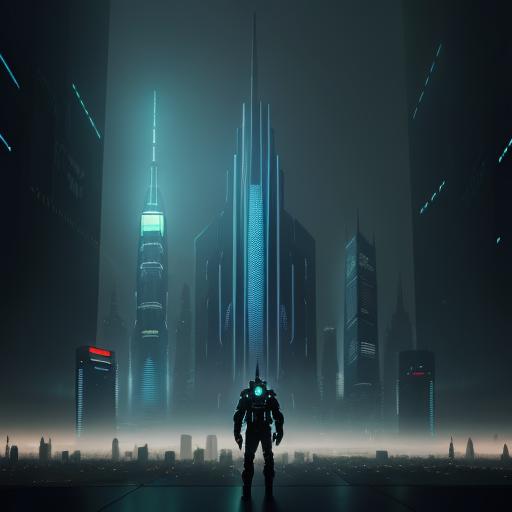The future of AI art critique is not about replacing human creativity—it’s about enhancing it. As artificial intelligence becomes more sophisticated, artists worldwide are discovering new ways to get feedback, improve their techniques, and push creative boundaries. This transformation is reshaping how we think about art criticism and artistic development in the digital age.
Key Points Summary
- AI provides objective analysis of formal elements like composition, color theory, and technique
- Human critics still excel at understanding emotion, cultural context, and artistic intent
- The best approach combines AI’s data-driven insights with human interpretation
- Ethical concerns include bias in training data, copyright issues, and impact on professional critics
- AI tools can help artists at all skill levels improve faster through instant, detailed feedback
- The future points toward human-AI collaboration rather than replacement
The Evolving Dialogue Between Art and Technology
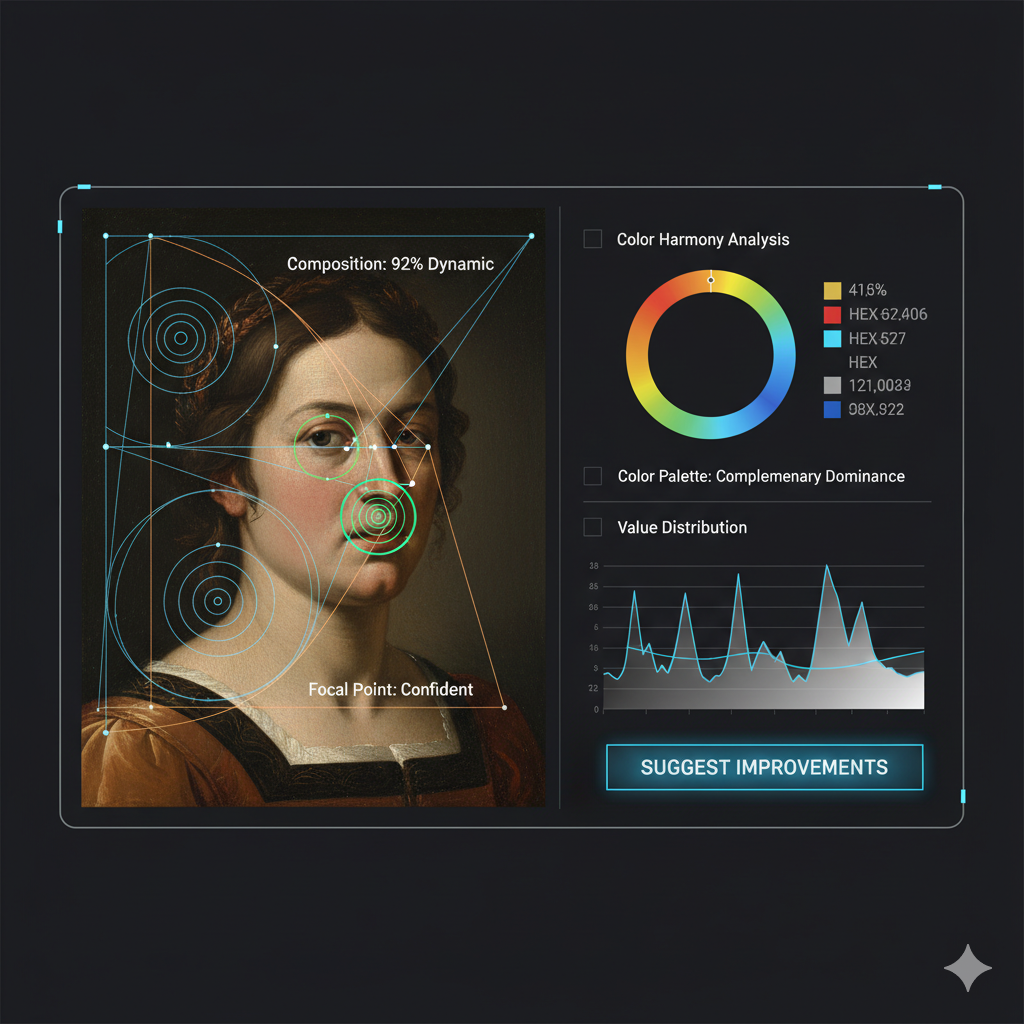
Technology has always influenced art. When photography emerged in the 19th century, painters worried it would make their craft obsolete. Instead, it freed them to explore new styles like Impressionism and abstract art. Digital art has similarly expanded creative possibilities, allowing artists to work in ways never before imagined.
Today, we’re experiencing another technological revolution. AI art generation has exploded in popularity, with tools like DALL-E, Midjourney, and Stable Diffusion creating images from text descriptions. But AI isn’t just creating art—it’s also learning to critique using an ai art analyzer.
The current AI boom in creative fields raises important questions: Can machines understand beauty? Should artists trust algorithmic feedback? And most importantly, what does the future of art critique look like when humans and AI work together?
Understanding Traditional Art Critique
Before diving into AI’s role, let’s understand what makes good art criticism. Traditional critique follows four core principles:
- Description – What do you see in the artwork?
- Analysis – How are formal elements like color, composition, and line used?
- Interpretation – What is the artist trying to communicate?
- Judgment – How successful is the artwork?
Human art critics bring something irreplaceable to this process: lived experience, emotional intelligence, and cultural understanding. When you look at a painting, you don’t just see colors and shapes—you feel something. You connect it to memories, emotions, and cultural touchstones that give it meaning.
This subjectivity isn’t a weakness—it’s a feature. Art exists to communicate human experiences, and understanding those experiences requires human empathy.
The Rise of AI in Art Creation
To understand AI art critique, we need to understand how AI creates art. Generative AI models learn from millions of images, identifying patterns in composition, color use, and style. When you give them a prompt, they generate new images by combining these learned patterns in novel ways.
The AI art market has grown dramatically, with some AI-generated pieces selling for thousands of dollars. This raises debates about originality and authorship. If an AI creates art based on training data from human artists, who owns the result?
These questions matter for critique too. When AI analyzes artwork, it’s drawing on the same massive dataset. Its “opinions” reflect patterns from countless human-made works.
How AI Can Shape Art Critique: Capabilities and Benefits
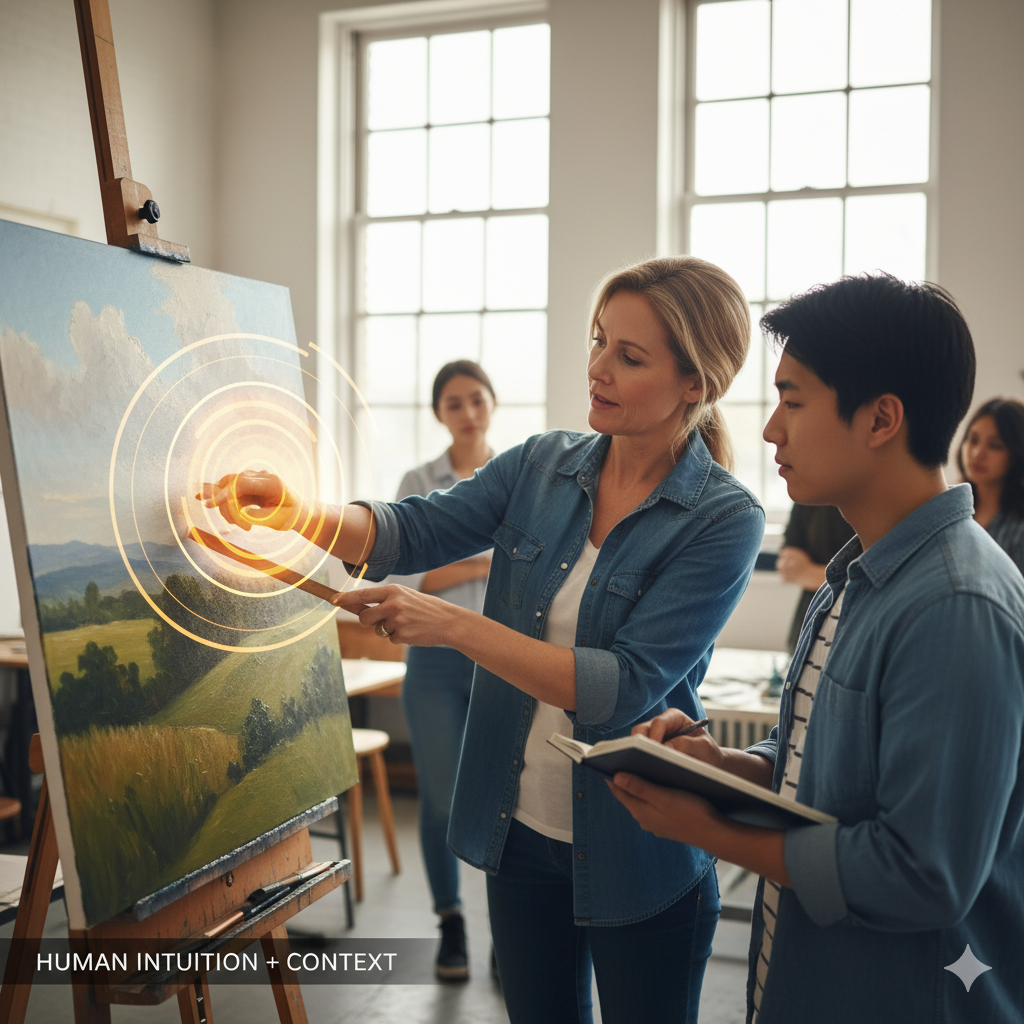
The future of AI art critique shows remarkable promise in several areas:
Objective Analysis
AI excels at identifying formal elements without bias. It can analyze:
- Composition – Is the rule of thirds being followed? Are there strong focal points?
- Color harmony – Does the color palette create unity or intentional contrast?
- Technical execution – Are perspective lines accurate? Is lighting consistent?
For example, AI can instantly tell you if your watercolor transparency needs adjustment or if your composition lacks balance.
Data-Driven Insights
AI can compare your work against vast historical datasets. It might notice that your brushwork resembles John Singer Sargent’s technique or that your color choices align with the Fauvism movement. These connections can inspire new directions and help you understand your place in art history.
Speed and Scalability
Traditional critique takes time. Art school students might wait weeks between feedback sessions. AI provides instant feedback on multiple iterations, letting you experiment rapidly and learn faster.
Professional artists working on commissions can get quick technical checks before showing work to clients, catching issues early.
Bias Detection
Ironically, AI can sometimes identify unconscious biases in human artists’ work—like repeatedly portraying certain demographics in limited ways. This meta-level analysis helps artists become more aware of their patterns.
Technical Feedback
For technical aspects like perspective in landscape painting or accurate proportions in portraiture, AI can provide precise measurements and suggestions that would take human critics significant time to calculate.
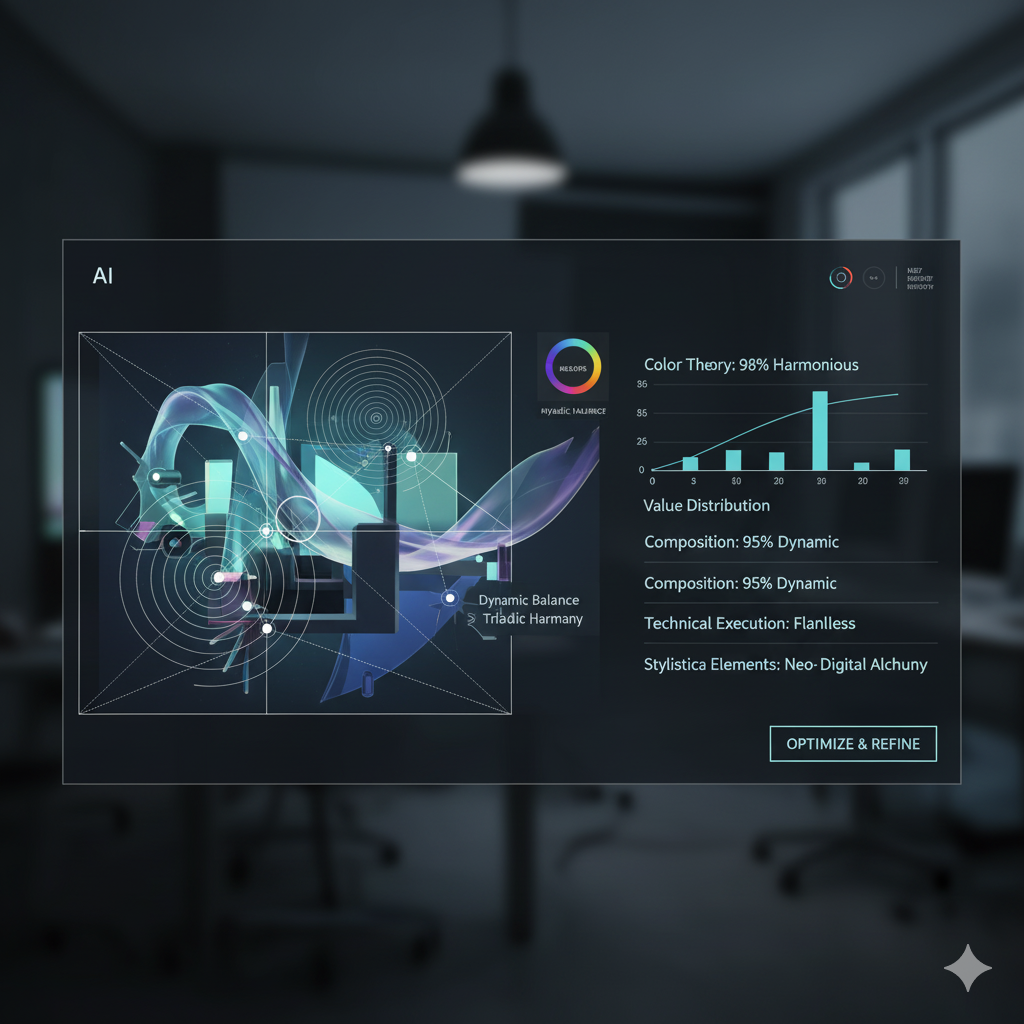
Limitations and Challenges of AI Critique
Despite these benefits, AI has significant limitations in understanding art:
Lack of Subjectivity and Emotion
AI doesn’t feel. It can’t understand the heartbreak in Edvard Munch’s emotional artwork or the joy in a Renoir painting. It processes pixels, not emotions.
When an artist pours personal trauma into abstract forms, AI might judge it technically competent while missing the entire point. Understanding artistic intent requires empathy that machines don’t possess.
Contextual Blindness
Art doesn’t exist in a vacuum. A painting’s meaning often depends on:
- Historical context – What was happening when it was created?
- Cultural context – What symbols and references does it use?
- Personal context – What was the artist’s situation?
Art movements like Cubism or Surrealism emerged from specific cultural moments. AI might recognize the style but can’t fully grasp the revolutionary context that made them meaningful.
Bias in Training Data
AI models learn from existing art, which reflects historical biases. If training data overrepresents certain aesthetics, cultures, or demographics, the AI will perpetuate those biases in its critique.
Women in art have historically been underrepresented. An AI trained primarily on Western art might undervalue techniques from other traditions.
The “Black Box” Problem
AI often can’t explain why it makes certain judgments. It might say a composition is weak but can’t articulate why in terms humans understand. This makes it hard for artists to learn from the feedback.
Absence of Human Experience
AI has never held a brush, mixed watercolor paint, or struggled with a challenging piece. It doesn’t understand the physical and emotional aspects of creating art from an artist’s perspective.
“The computer can’t tell you the emotional story. It can give you the exact mathematical design, but what’s missing is the eyebrows.”
Frank Zappa
The Future Role of the Human Artist
In the future of AI art critique, artists won’t be passive recipients of feedback—they’ll be active collaborators with technology.
Adapting to AI as a Creative Partner
Smart artists are already using AI tools as creative assistants, not replacements. They might:
- Use AI to generate composition sketches they later refine
- Get quick technical checks on perspective or lighting
- Explore style variations before committing to a direction
- Receive suggestions for color palettes they hadn’t considered
Using AI Feedback for Self-Improvement
Beginner artists especially benefit from AI’s patient, judgment-free feedback. You can submit dozens of practice pieces without worrying about wasting a teacher’s time.
AI can identify patterns in your work you might not notice—like consistently placing focal points in the same spot or avoiding certain color combinations.
Maintaining Unique Human Creativity
The most important skill becomes finding your artistic voice. AI can help with technique, but your unique perspective, experiences, and emotional truth are what make your art matter.
Prompt Engineering as an Artistic Skill
For artists using AI art generation, crafting effective prompts becomes a new creative skill. It’s like learning a new medium—you need to understand how to communicate with the AI to get the results you envision.
Human-AI Collaboration in Art Critique: A Symbiotic Future
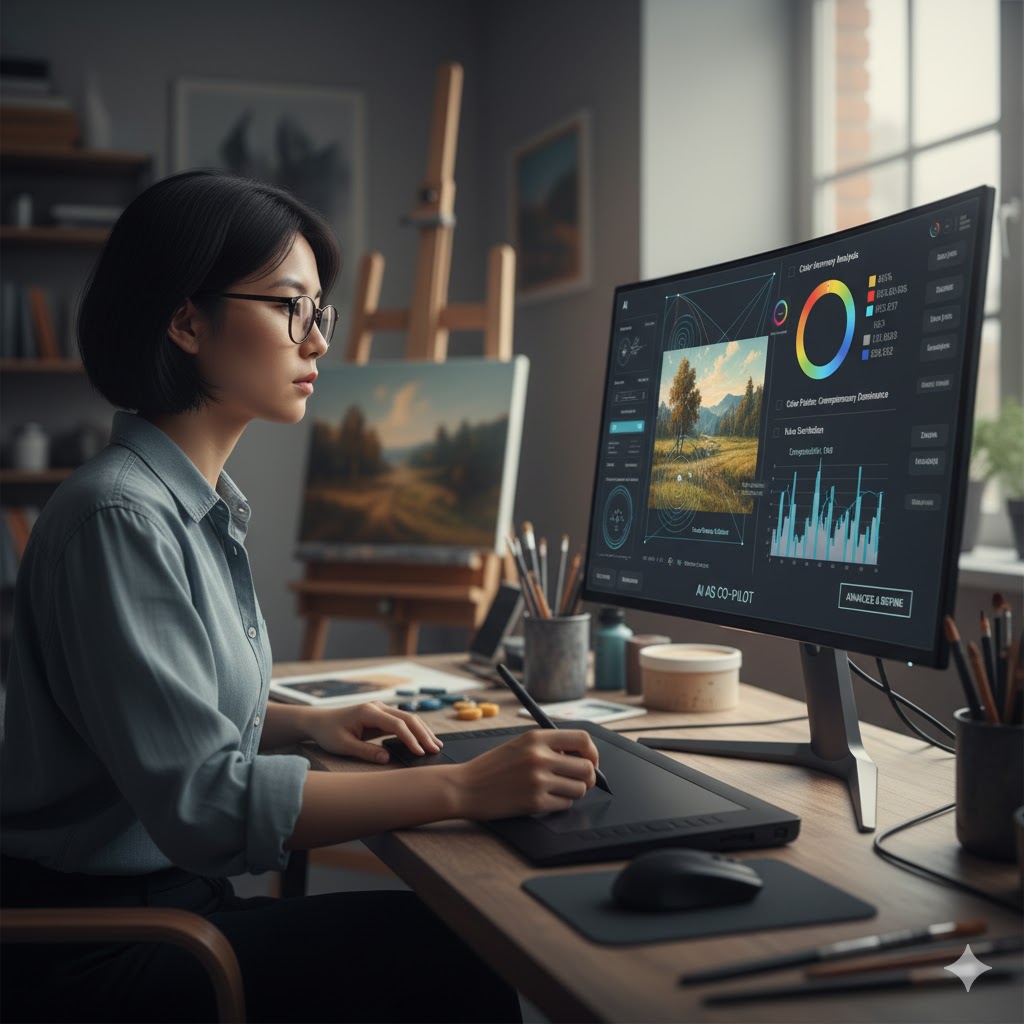
The most exciting aspect of the future of AI art critique isn’t AI replacing humans—it’s the powerful combination of both approaches.
AI as an Assistant Critic
Imagine this workflow:
- You finish a painting and submit it to an AI tool
- The AI provides detailed technical analysis within seconds
- It identifies three compositional issues and suggests specific improvements
- You make adjustments based on this technical feedback
- Then you show the work to a human critic for deeper interpretation
The AI handles the technical heavy lifting, freeing human critics to focus on meaning, emotion, and context.
Human Critics Providing Interpretive Layers
After AI provides objective analysis, human critics can:
- Interpret what the artist might be expressing
- Place the work in cultural and historical context
- Discuss emotional resonance and psychological impact
- Connect it to art movements and traditions
Hybrid Critique Models
Art education is evolving to incorporate these hybrid approaches. Online art courses now combine:
- AI-powered instant feedback on technical exercises
- Peer review for creative input
- Weekly critiques with professional instructors for deeper guidance
New Forms of Critical Discourse
AI and art collaboration is creating entirely new art forms that require new critical frameworks. How do we critique generative art where the artist’s role is guiding algorithms? These questions are reshaping art criticism itself.
Ethical and Philosophical Considerations
The future of AI art critique raises important ethical questions we must address:
Copyright and Ownership
When AI trained on copyrighted images critiques your work, whose intellectual property informs that feedback? The AI art ethics debate continues to evolve as courts and legislatures grapple with these issues.
The Definition of Art and Artist
If AI can create and critique art, what makes something “art”? Philosophers and artists debate whether creative intention is necessary for art to exist or if the viewer’s experience is what matters.
Fairness, Transparency, and Accountability
AI critique systems must be:
- Fair – Not perpetuating biases against certain styles or cultures
- Transparent – Explaining how they reach conclusions
- Accountable – Having clear responsibility when AI feedback is harmful or misleading
Impact on Livelihoods
Will AI critique reduce demand for human art teachers and critics? Or will it democratize art education, creating more opportunities for human guidance at higher skill levels?
The increasing art market size suggests growing demand for both AI tools and human expertise.
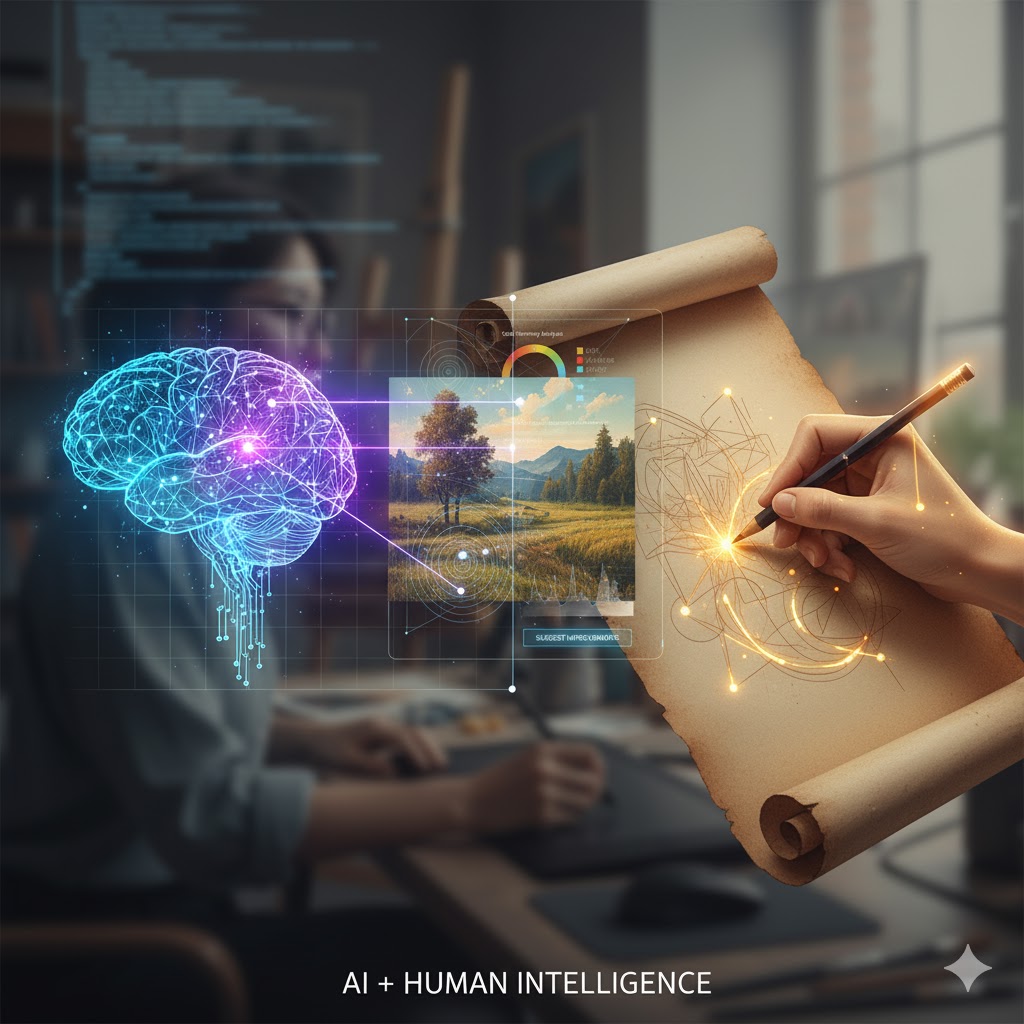
Practical Applications and Tools for Artists
Several AI tools already help artists improve their work:
Currently Available AI Art Critique Tools
While specific tools evolve rapidly, current options include:
- General AI assistants – ChatGPT, Claude, and similar tools can analyze uploaded images and provide feedback
- Specialized art analysis tools – Some focus specifically on composition, color theory, or style matching
- Art education platforms – Apps like Skillshare and Domestika are integrating AI feedback features
Tips for Effectively Using AI Critique
To get the most from AI art feedback:
- Be specific in your questions – Don’t just ask “Is this good?” Ask about particular elements like “Is my composition creating effective focal points?”
- Use it for technical aspects first – AI is better at analyzing color theory and structure than emotional content
- Combine with human feedback – Use AI for quick iterations, but still seek human input on meaningful work
- Understand its limitations – Don’t expect AI to understand deeply personal or culturally specific content
- Experiment with different tools – Each AI has different strengths; try several to find what works for your needs
Case Study: Using AI to Improve a Landscape Painting
Let’s follow artist Sarah as she uses AI critique:
Sarah painted a watercolor landscape but felt something was off. She uploaded it to an AI tool:
AI Feedback:
- Horizon line divides the canvas exactly in half, creating static composition
- Foreground lacks detail compared to middle ground and background
- Cool shadows use blue, but warm sunlight areas need warmer highlights for color temperature contrast
Sarah adjusted the horizon line following the rule of thirds, added foreground texture, and warmed her highlight colors. The painting immediately felt more dynamic.
She then showed it to her art teacher, who praised the technical improvements but suggested the scene felt empty without a focal point. Sarah added a small cottage in the middle ground, giving viewers somewhere to rest their eyes.
This example shows how AI handles technical issues while humans provide creative direction.
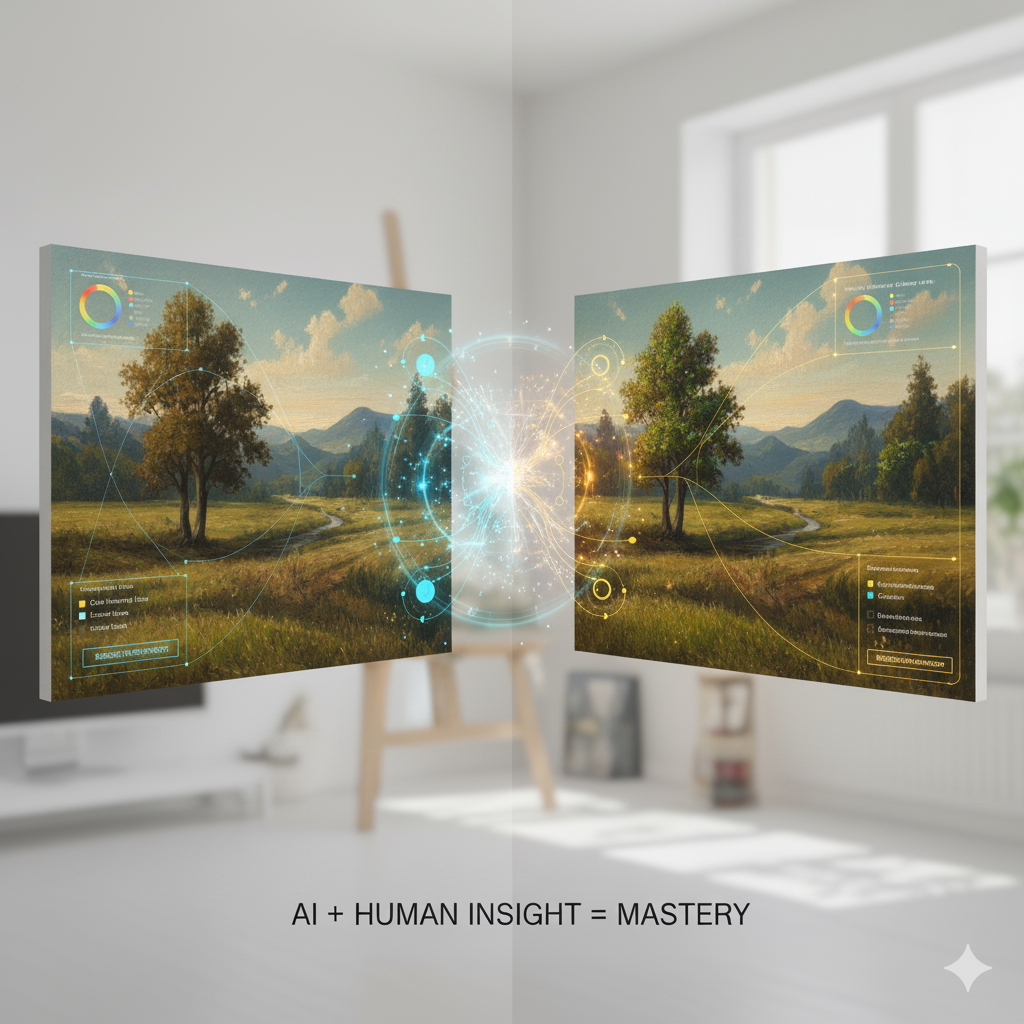
Embracing the Evolution of Art and Criticism
The future of AI art critique isn’t something to fear—it’s an exciting tool for artistic growth. Throughout history, artists have embraced new technologies that enhanced rather than replaced human creativity.
Photography didn’t kill painting—it freed painters to explore abstraction and expression. Digital art tools didn’t diminish traditional media—they created new possibilities. Similarly, AI critique augments rather than replaces human artistic judgment.
The key is understanding that AI provides a different kind of feedback than human critics. It’s exceptionally good at objective technical analysis but lacks the emotional intelligence and cultural understanding that makes art meaningful.
Artists who thrive will be those who learn to use AI as one tool among many—combining its analytical power with human creativity, intuition, and emotional depth. The future belongs to artists who can speak both languages: the technical language of algorithms and the emotional language of human experience.
Contemporary artists are already pioneering this hybrid approach, creating work that’s technically sophisticated and emotionally resonant. They use AI to handle technical challenges faster, leaving more time for the creative exploration that makes art compelling.
The future of AI art critique points toward a richer, more diverse art world where technology amplifies human creativity rather than replacing it. By embracing both AI’s analytical capabilities and human emotional intelligence, we can create better art criticism—and ultimately, better art.
Whether you’re a complete beginner just learning basic techniques or an experienced professional refining your craft, understanding how to work with AI tools will be increasingly important. The artists who succeed will be those who maintain their unique creative vision while leveraging technology to improve their technical execution and reach wider audiences.
Frequently Asked Questions
Can AI replace human art critics?
No, AI cannot fully replace human art critics. While AI excels at objective technical analysis—identifying compositional issues, color theory problems, and formal elements—it lacks the emotional intelligence, cultural understanding, and lived experience necessary to interpret art’s deeper meanings. The most effective approach combines AI’s analytical capabilities with human critics’ interpretive and contextual insights. Human creativity and interpretation remain irreplaceable in understanding what art communicates.
What are the ethical concerns surrounding AI art and its critique?
The main ethical concerns include: copyright issues when AI is trained on copyrighted artwork, bias in training data that may perpetuate historical prejudices, lack of transparency in how AI reaches conclusions (the “black box” problem), questions about authorship and ownership of AI-assisted work, and potential negative impacts on the livelihoods of professional artists and critics. Ethical considerations in AI art continue evolving as the technology develops.
How can artists use AI to get feedback on their work?
Artists can use AI critique tools by uploading images of their work and asking specific questions about technical aspects like composition, color harmony, perspective, or lighting. AI works best for objective technical analysis rather than interpretation. The most effective approach combines quick AI feedback for technical iterations with periodic human feedback for creative direction and deeper meaning. AI can help beginners learn faster by providing instant, judgment-free feedback on practice pieces.
What are the limitations of AI in understanding artistic intent?
AI cannot truly understand artistic intent because it lacks consciousness, emotions, and lived experience. It analyzes patterns in pixels but cannot feel the heartbreak, joy, or complex emotions artists express. AI also struggles with cultural context, symbolism, and personal meaning that inform why artists make specific choices. Artistic intent often emerges from deeply personal experiences and cultural knowledge that AI cannot genuinely comprehend, only pattern-match against its training data.
Will AI make art critique more objective or subjective?
AI makes certain aspects of art critique more objective by providing data-driven analysis of formal elements like composition, color theory, and technical execution. However, the most meaningful art criticism will always contain subjective elements because art’s purpose is human communication and expression. The future likely holds a hybrid approach where AI handles objective technical analysis while human critics provide subjective interpretation, creating a more complete and useful form of critique that combines both approaches.
Citations
- Anthropic. (2025). “AI Art Generation and Analysis.” Retrieved from https://www.anthropic.com
- OpenAI. (2024). “DALL-E and Creative AI Applications.” Retrieved from https://openai.com
- Midjourney. (2025). “Generative AI for Creative Professionals.” Retrieved from https://www.midjourney.com
- Stability AI. (2024). “Stable Diffusion: Open Source AI Art Generation.” Retrieved from https://stability.ai
- Art Basel & UBS. (2024). “The Art Market Report 2024.” Retrieved from https://www.artbasel.com/about/initiatives/the-art-market
- The Art Newspaper. (2024). “How AI is Transforming Art Criticism.” Retrieved from https://www.theartnewspaper.com
- MIT Technology Review. (2024). “The Ethics of AI-Generated Art.” Retrieved from https://www.technologyreview.com
- Google Arts & Culture. (2025). “AI Experiments in Art Analysis.” Retrieved from https://artsandculture.google.com

